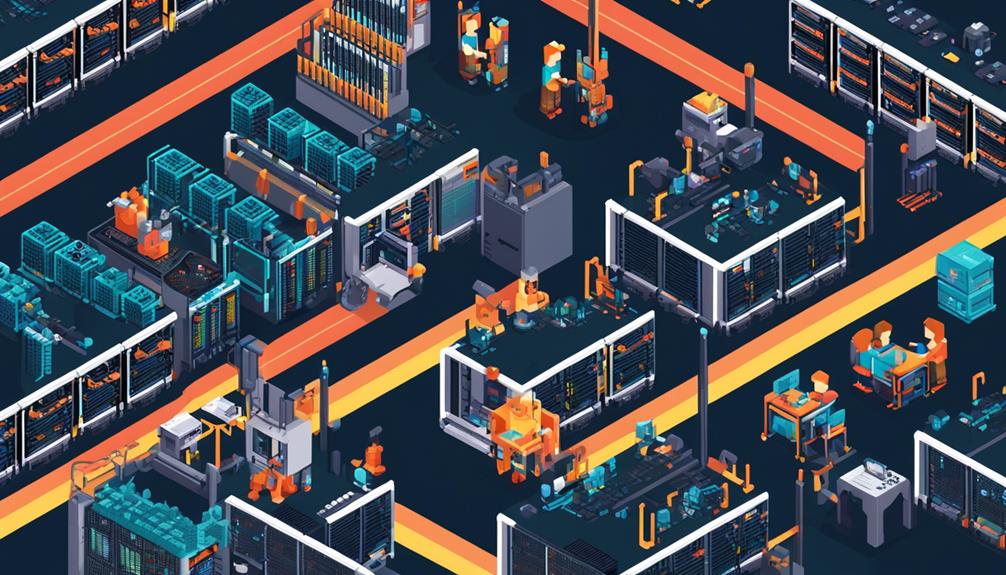Edge data centers are at the forefront of the rapidly evolving digital landscape, enabling the processing and analysis of data closer to its source. As these data centers continue to proliferate, the hardware needs become paramount in ensuring their smooth and efficient operation.
From ruggedness and compactness to storage capacity and connectivity options, edge computers must meet a range of requirements to withstand volatile environments, provide optimal compute power, and handle the large volumes of data generated by IoT devices.
In this discussion, we will explore the various hardware needs of edge data centers, examining the importance of factors such as reliability, performance, versatility, and security. By understanding these requirements, we can gain valuable insights into the evolving landscape of edge computing and its impact on the digital infrastructure.
Key Takeaways
- Edge data centers require rugged and fanless hardware that can withstand harsh conditions.
- The choice of computing options should cater to both lightweight and high-performance tasks.
- Connectivity options, including wired and wireless, should be carefully selected based on environmental conditions and requirements.
- Edge data centers need to prioritize power efficiency, security measures, and reliable network infrastructure for optimal performance and data protection.
Rugged and Fanless Edge Computers
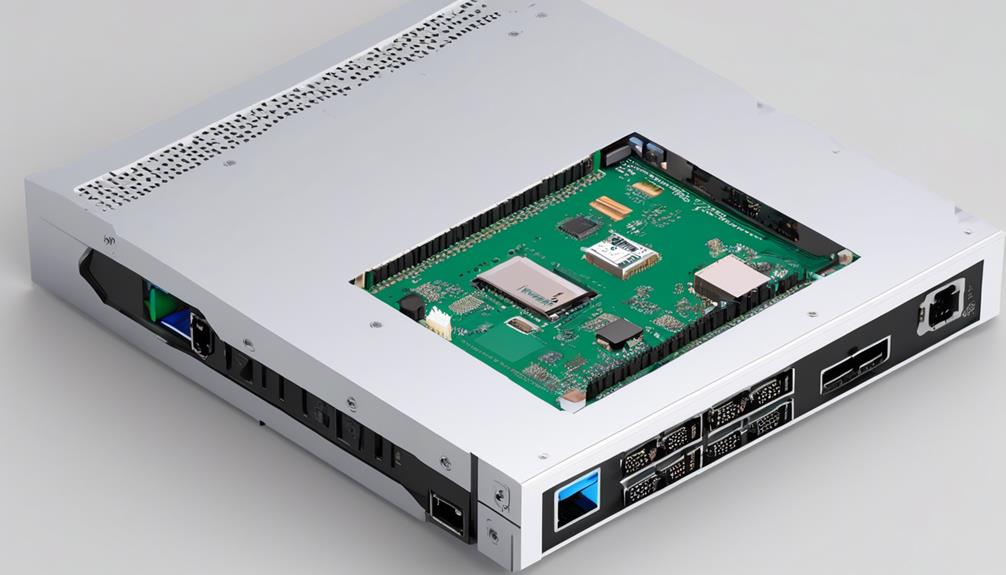
Rugged and fanless edge computers are specifically designed to withstand shocks, vibrations, dust, debris, and extreme temperatures, making them ideal for deployment in challenging industrial environments. These computers play a crucial role in edge data centers, where the hardware needs to be durable and reliable.
One of the key features of rugged and fanless edge computers is their ability to withstand harsh conditions. Their fanless design eliminates the need for vents and openings, providing a closed system that prevents damage to internal components. This ensures that the computers can continue to operate efficiently even in dusty or debris-filled environments. Additionally, their ability to withstand shocks and vibrations makes them suitable for installation in areas where machinery or heavy equipment is in use, without the risk of damage to the internal components.
Another advantage of rugged and fanless edge computers is their wide temperature range. Unlike regular desktop computers, which typically operate within a limited temperature range, these computers can function reliably in extreme temperatures ranging from -40⁰C to 85⁰C. This makes them suitable for deployment in volatile environments where temperature fluctuations are common.
Furthermore, the cableless design of these computers is another noteworthy feature. By eliminating loose cables, these computers reduce the points of failure and increase the overall reliability of the system. This is particularly important in industrial environments where the risk of accidental cable disconnection or damage is high.
Performance Requirements for Edge Computers
Performance requirements for edge computers vary depending on the specific workloads and tasks they are intended to handle. Different edge computing workloads demand a range of computing options, from low-powered efficient devices for entry-level workloads to powerful solutions for complex industrial tasks. To better understand the performance requirements for edge computers, let's take a look at the table below:
| Workload Type | Computing Option |
|---|---|
| Lightweight Workloads | SoC Industrial Computers |
| High-Performance Tasks | Socket-Based Industrial Computers |
For lightweight workloads, such as remote monitoring, edge computers equipped with System-on-Chip (SoC) industrial computers can provide efficient processing capabilities. These devices are designed to handle low-power tasks and offer a cost-effective solution for edge computing.
On the other hand, high-performance tasks, such as real-time analytics or machine learning at the edge, require more processing power. In such cases, edge computers with socket-based industrial computers are preferred. These devices offer higher processing capabilities and can handle more complex workloads.
Regardless of the specific workload, edge computers must be equipped with sufficient storage capacity to handle the large amounts of data generated by IoT devices. This allows for processing data locally, reducing latency and avoiding the need to move data to the cloud for processing. Rich connectivity options are also crucial for edge computers, ensuring seamless integration with existing network infrastructure and support for various IoT and IIoT devices.
Moreover, edge computers must have a wide power range to operate in environments with fluctuating power supply. Power efficiency, redundancy, and protection against power surges and fluctuations are essential features to consider when selecting edge computers.
Compact and Versatile Edge Computer Mounting
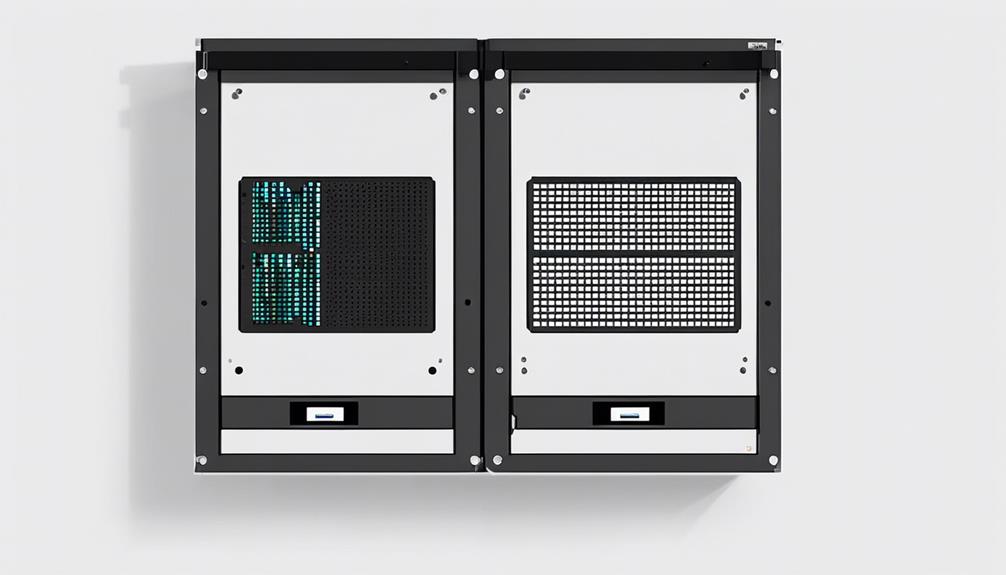
Compact and versatile mounting options are crucial for edge computers deployed in space-constrained industrial environments. When it comes to edge data centers, hardware needs to be optimized for efficient space utilization. In order to achieve this, compact and versatile edge computer mounting options play a vital role.
In space-constrained industrial environments, it is essential to have mounting options that can accommodate edge computers without taking up valuable space. Versatile mounting options such as wall, ceiling, bookshelf, DIN Rail, and VESA mounts offer flexibility in positioning edge computers. These options enable edge computers to be deployed in diverse industrial environments, meeting specific space and environmental requirements.
By utilizing compact and versatile mounting options, edge computers can be positioned efficiently, ensuring that they do not interfere with other equipment or operations. This helps to optimize space utilization and ensures that the edge computing hardware is seamlessly integrated into the industrial environment.
The compact nature of these mounting options also allows edge computers to be deployed in tight spaces where traditional rack-mounted solutions may not be feasible. This is particularly important in edge data centers where space is often at a premium.
Sufficient Rugged Storage for Edge PCs
Edge PCs deployed in rugged environments require robust and reliable storage solutions to effectively handle the challenges posed by volatile conditions. These rugged storage options are designed to withstand shocks, vibrations, and extreme temperatures, ensuring reliable performance in edge computing scenarios. With the increasing volume of data generated by IoT devices at the edge, sufficient storage capacity is essential for processing and analyzing this data in real-time.
Rugged storage plays a crucial role in edge computing by minimizing the need to move data to the cloud for processing. This helps in cost-saving by reducing internet bandwidth usage and storage costs associated with cloud storage. By having sufficient storage at the edge, data can be processed and analyzed locally, allowing for faster insights and decision-making.
To cater to different edge computing workloads, various storage options should be available. Solid-state drives (SSDs) are commonly used due to their durability and fast data access speeds. These SSDs can handle high read and write operations, making them suitable for edge computing applications that require real-time data processing.
Additionally, network-attached storage (NAS) devices can be deployed at the edge to provide scalable and centralized storage solutions. These devices can be easily integrated into existing edge networks, allowing for seamless data management and access.
Rich I/O in Rugged Edge Computers
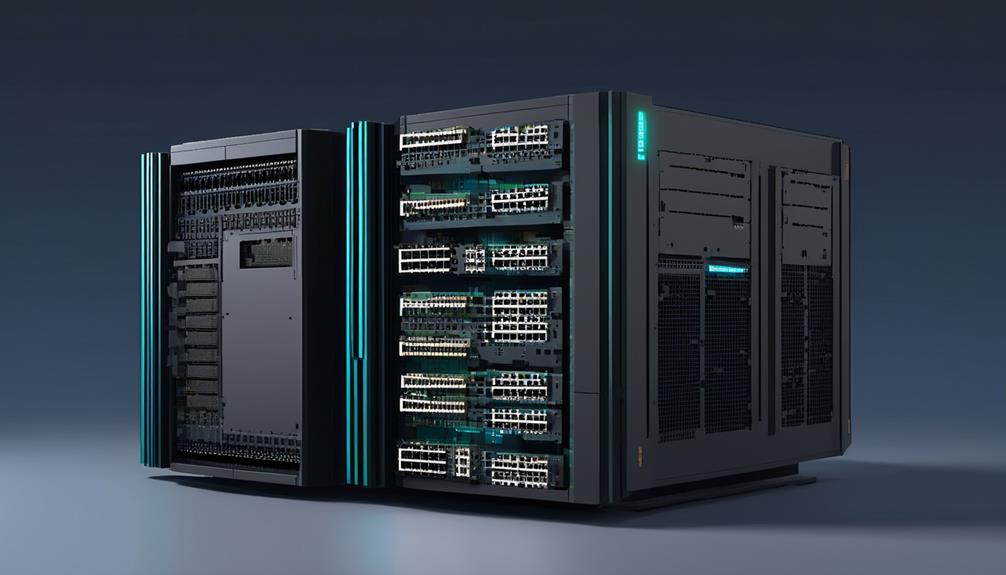
Rugged edge computers are equipped with robust I/O capabilities, enabling seamless communication and integration with a wide range of devices in edge computing environments. These devices offer a variety of connectivity options, including Ethernet, USB, serial ports, and wireless interfaces, allowing for efficient data exchange and control.
With rich I/O, rugged edge computers can efficiently handle the diverse requirements of industrial applications, enabling real-time monitoring, data collection, and analysis.
Robust I/O for Edge
With its extensive input/output connectivity, Robust I/O for Edge (Rich I/O in Rugged Edge Computers) enhances the seamless integration of IoT and IIoT devices in challenging environments. This feature enables reliable and stable connectivity for data transfer and communication at the edge. It ensures diverse input/output options, allowing for flexible and versatile configurations to accommodate future connectivity needs in volatile settings. The robust I/O capabilities of edge computing hardware are crucial to meet the demanding connectivity requirements of edge-centric applications.
| Advantages | Benefits |
|---|---|
| 1. Extensive input/output connectivity | 1. Seamless integration with IoT and IIoT devices |
| 2. Reliable and stable communication | 2. Enhanced data transfer capabilities |
| 3. Flexible and versatile configurations | 3. Accommodation of future connectivity needs |
| 4. Meets demanding connectivity requirements | 4. Supports edge-centric applications |
With Robust I/O for Edge, computing and processing devices can efficiently connect and interact with a wide range of devices, ensuring the smooth operation of edge data centers in even the most challenging environments.
Ruggedized Edge Computing
The integration of Robust I/O for Edge in edge computing hardware paves the way for the discussion of Ruggedized Edge Computing, focusing on the industrial-grade and durable nature of rugged edge computers engineered for volatile environments.
Ruggedized edge computers are specifically designed for harsh environments, offering reliability and high durability. These computers are tested to withstand extreme conditions, making them suitable for use in volatile environments. They are equipped with rich connectivity options and a wide power range, allowing for versatility in various edge computing needs.
Rugged edge computers are available in a variety of options, offering compact size, sufficient storage capacity, and a fanless design to eliminate common points of failure. They are designed to provide optimal compute power, even in low power environments, for handling entry-level to complex industrial workloads.
Wired and Wireless Connectivity Options for Edge Computers
Wired and wireless connectivity options are crucial for edge computers, providing seamless integration with IoT and IIoT devices.
While wired connections offer advantages such as higher bandwidth and lower latency, wireless technology offers mobility and flexibility.
Wired connections ensure reliable and stable communication, while wireless technology allows for easy deployment and scalability.
Both options play a vital role in enabling efficient data transfer and communication at the edge.
Wired Vs Wireless Connectivity
Wireless connectivity offers a versatile and adaptable solution for edge computers, enabling seamless communication in environments where wired connections may be impractical or restrictive.
While wired connectivity provides stable and reliable data transfer, wireless options offer flexibility and mobility.
Wired connections ensure consistent and uninterrupted data flow, making them ideal for critical edge computing applications that require real-time processing and analysis.
On the other hand, wireless connectivity allows edge devices to communicate without physical constraints, making it suitable for deployment in remote or dynamic environments.
Selecting the appropriate connectivity option for edge centers depends on factors such as environmental conditions, data transfer speed requirements, and mobility needs.
Considering these factors, edge centers must carefully evaluate their hardware needs and choose the connectivity option that best suits their specific requirements.
Advantages of Wired Connections
In the realm of edge computing, when considering connectivity options for edge computers, wired connections present distinct advantages over their wireless counterparts. Wired connections provide more stable and reliable data transfer, ensuring that critical information reaches its destination without any interruption. They offer higher security, reducing the risk of unauthorized access or data breaches. Wired connections also have lower latency, allowing for faster data processing and real-time applications. Additionally, they typically offer higher data transfer speeds, enabling efficient transmission of large amounts of data. From a cost perspective, wired connections are often more cost-effective and easier to manage in terms of deployment and maintenance. Overall, wired connections are the preferred choice for applications requiring consistent and uninterrupted connectivity, low power consumption, and reduced latency.
| Advantages of Wired Connections | |
|---|---|
| Stable and reliable data transfer | |
| Higher security | |
| Lower latency | Faster data processing |
| Higher data transfer speeds | Efficient data transmission |
| Cost-effective and easy to manage | |
| Suitable for uninterrupted connectivity, low power consumption, and reduced latency |
Benefits of Wireless Technology
Utilizing wireless technology in connectivity options for edge computers offers a myriad of benefits, facilitating seamless deployment and integration in various environments.
One of the key advantages is the low power consumption of wireless connections, which is crucial for edge computing systems that operate in remote or resource-constrained locations.
Wireless connectivity also enables easy integration with IoT and IIoT devices, allowing for seamless data transfer and communication.
Moreover, wireless options provide increased scalability and adaptability, allowing edge computing systems to easily accommodate changing requirements and environments.
By eliminating the need for wired connections, wireless technology reduces clutter and complexity, simplifying installation and maintenance.
Additionally, relying on wireless connectivity minimizes points of failure and potential vulnerabilities, enhancing the overall reliability and robustness of edge computing systems.
Wireless technology is truly a performance accelerator for edge computing applications.
Wide Power Range for Edge Computing Hardware
The wide power range of edge computing hardware enables it to operate efficiently in environments with fluctuating power supply. This is achieved by encompassing a wide voltage input range that allows for the seamless integration of different power sources, ensuring adaptability in diverse scenarios. Power efficiency is a crucial aspect of edge computing hardware, as it directly impacts energy consumption. By optimizing power utilization, these systems can minimize their environmental footprint and reduce operational costs.
To ensure uninterrupted operation, edge computing hardware often incorporates power redundancy. This redundancy feature allows for seamless switching between power sources in the event of power failures or disruptions. By having multiple power sources available, edge data centers can maintain continuous operations, preventing any potential downtime or data loss.
Moreover, protection against power surges and fluctuations is of utmost importance for the reliability and longevity of edge computing hardware. Robust power protection mechanisms, such as surge protectors and voltage stabilizers, safeguard the equipment from potential damage caused by sudden electrical spikes or drops. This ensures the stability and longevity of the hardware, reducing the risk of costly repairs or replacements.
Secure Edge Computers
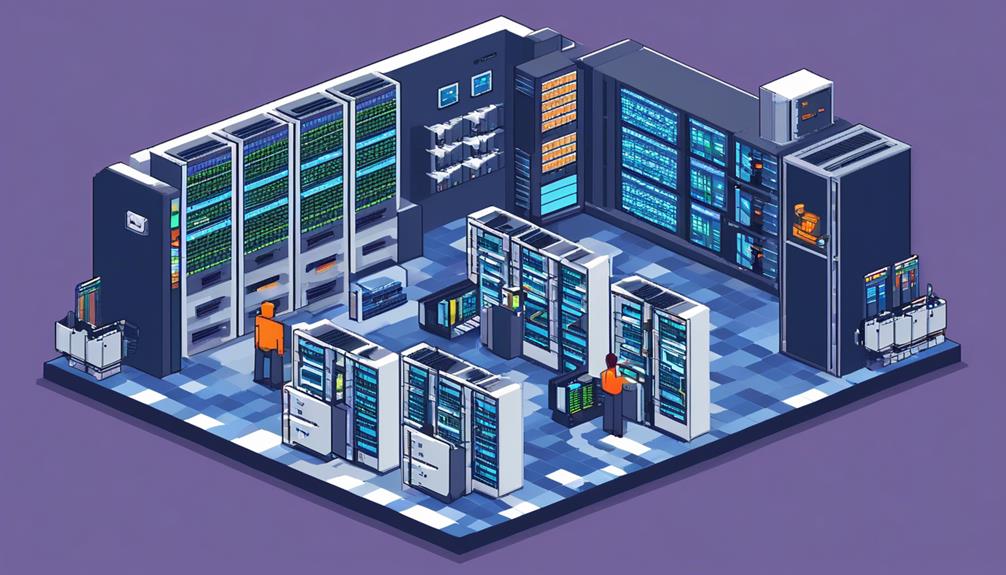
Building on the importance of power efficiency and protection in edge computing hardware, secure edge computers prioritize security features to protect sensitive data in volatile environments. These computers are specifically designed to withstand the harsh conditions often found at the edge, including shocks, vibrations, dust, and extreme temperatures. By incorporating ruggedized components and enclosures, secure edge computers ensure high durability and reliability, making them suitable for mission-critical data processing in challenging environments.
To further enhance their resilience, secure edge computers adopt a fanless design. This not only prevents damage from debris but also eliminates potential points of failure associated with cooling fans. This feature allows these computers to operate efficiently and reliably in dusty or dirty environments, where fan-based systems may be prone to failure.
In addition to their physical durability, secure edge computers offer a wide power range. This capability allows them to accommodate fluctuating power supplies commonly encountered at the edge, ensuring uninterrupted operation even in areas with unreliable electricity infrastructure. As a result, these computers can effectively support critical applications that require continuous availability and reliable performance.
To enable seamless integration with various IoT devices and communication protocols, secure edge computers provide rich connectivity options. This allows them to efficiently gather and process data from diverse sources, enabling organizations to make informed decisions based on real-time information.
Performance Accelerators for Real-time Processing
Are performance accelerators essential for real-time processing in edge computing environments? The answer is a resounding yes.
Performance accelerators, such as GPUs (Graphics Processing Units), play a crucial role in enhancing the processing capabilities of edge devices. These accelerators enable efficient handling of computationally intensive tasks, such as machine learning and computer vision, which are essential for real-time data analysis and decision-making.
Hardware accelerators like GPUs are designed to offload intensive tasks from general-purpose processors, resulting in improved processing speed and efficiency. By leveraging the parallel processing capabilities of GPUs, edge devices can process large amounts of data in real-time, enabling faster response times and low latency.
The use of performance accelerators in edge computing environments is particularly important for applications that require real-time processing, such as self-driving cars. These accelerators contribute to enhanced safety and efficiency by enabling quick and accurate analysis of sensor data, allowing autonomous vehicles to make split-second decisions.
In addition to GPUs, other types of accelerators, such as FPGAs (Field Programmable Gate Arrays) and ASICs (Application-Specific Integrated Circuits), are also used in edge computing environments. These accelerators are designed to handle specific workloads efficiently, further improving the performance and capabilities of edge devices.
Telemetry Certification for Edge Computers
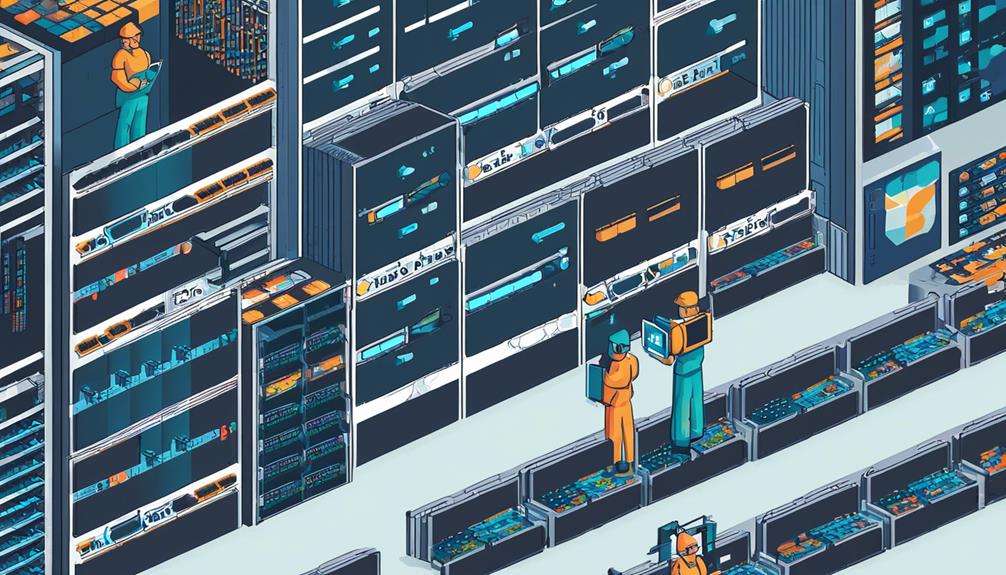
Telemetry plays a crucial role in edge computing environments, ensuring accurate and reliable data collection and transmission.
The certification of telemetry systems enhances their trustworthiness and adherence to industry standards.
Importance of Telemetry
Certified telemetry systems play a vital role in ensuring the efficient operation and proactive management of edge computers in challenging and remote environments.
These systems are crucial for monitoring and managing the performance and health of edge computers in real-time.
Telemetry certification ensures that edge computers can effectively collect, transmit, and analyze data from remote locations.
By remotely monitoring environmental factors like temperature, humidity, and power levels, telemetry helps ensure optimal operation of edge computers.
The certified telemetry systems enable proactive maintenance and troubleshooting, minimizing downtime and optimizing performance.
This is particularly important in challenging and remote environments where physical access to the edge computers may be limited.
Moreover, the data collected through telemetry can be stored and accessed for further analysis, enabling organizations to harness the power of intelligence (AI) and uncover revenue opportunities.
Benefits of Certification
The benefits of telemetry certification for edge computers can be grouped into several categories:
- Enhanced operational efficiency:
- Reliable and accurate data collection
- Improved operational efficiency in edge data centers
- Validated performance in volatile environments:
- Certified edge computers provide validated performance
- Ensures reliability and durability in volatile environments
- Effective handling of diverse workloads:
- Compliance with telemetry certification standards
- Ability to handle diverse workloads effectively
- Meets the hardware needs of edge data centers
- Seamless integration with IoT and IIoT devices:
- Certified edge computers demonstrate high-quality connectivity options
- Supports seamless integration with IoT and IIoT devices
- Enhances the capabilities of edge computing
- Robust power management in fluctuating power supply environments:
- Telemetry certification enables robust power management
- Allows edge computers to operate efficiently even in fluctuating power supply environments
These benefits highlight the importance of telemetry certification in meeting the hardware needs of edge data centers.
Industry Standards for Telemetry
Industry standards for telemetry in edge computers ensure compliance with rigorous requirements for reliable data collection and transmission. These standards are essential due to the wide range of applications and the nature of edge computing.
Here are some critical factors that industry standards for telemetry focus on:
- Durability: Certification testing includes evaluating the performance of edge computers under volatile environmental conditions.
- Reliability: Industry standards ensure that edge computers can consistently collect and transmit data without interruptions or failures.
- Seamless Data Processing: Certified telemetry capabilities guarantee seamless and dependable data processing at the edge.
- Compliance: Standards ensure that edge computers meet the necessary compliance regulations for data collection and transmission.
- Performance: Industry standards assess the performance of edge computers to ensure they can handle the demands of real-time data processing.
Bottom Line
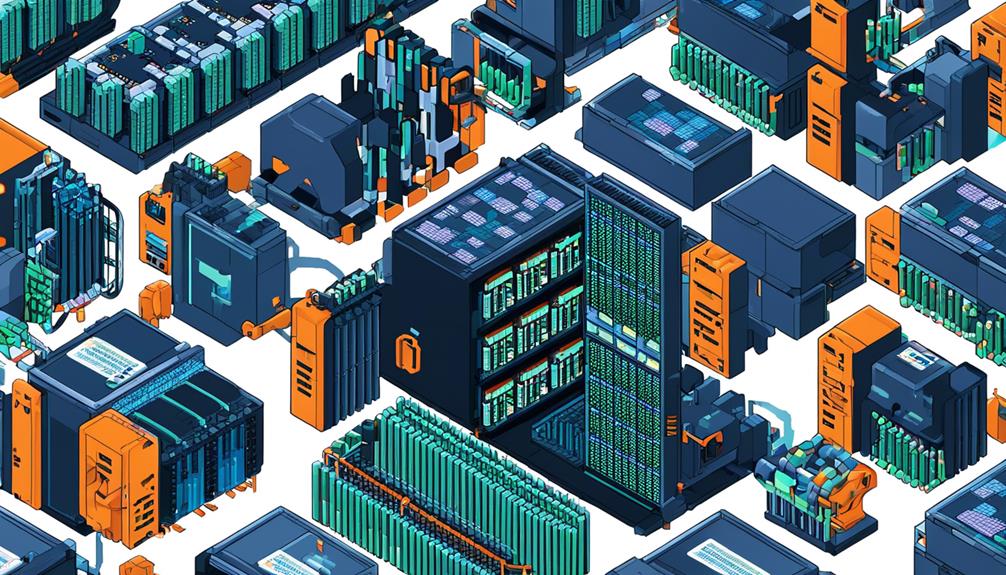
Efficiency and reliability are key factors to consider when evaluating the bottom line of edge data centers. These centers require hardware that can withstand harsh environmental conditions, minimize downtime, and increase productivity. To achieve this, edge computers must possess optimal compute power, rich connectivity options, compact size, versatile mounting options, and sufficient storage capacity.
In terms of compute power, edge computers need to have the capability to efficiently process data, handle complex algorithms, and support hardware acceleration options. This ensures that the data generated by IoT devices can be processed in real-time, enabling faster decision-making and reducing the need for data to be transferred to the cloud.
Connectivity is another critical aspect of edge data centers. They need to support various IoT and IIoT devices and be compatible with different communication protocols. Reliable and stable connectivity is crucial for seamless data transfer and communication between devices, enabling efficient edge computing workflows.
Edge computers also need to be compact in size and offer versatile mounting options to accommodate space-constrained environments and industrial settings. The ability to be deployed in these challenging conditions allows edge data centers to be placed closer to the source of data generation, reducing latency and improving response times.
Lastly, edge data centers require sufficient storage capacity to handle the large amounts of data generated by IoT devices. This eliminates the need to move data to the cloud for storage and allows for local processing and analysis. Different edge computing workloads may have varying storage requirements, so having suitable storage options is essential.
Frequently Asked Questions
What Are the Hardware Used in Edge Computing?
Edge computing hardware refers to the equipment and devices used in edge computing environments. These include edge servers, which are compact and ruggedized computers designed to operate reliably in volatile environments.
Edge computing devices are typically fanless, with a wide temperature range and cableless design to eliminate points of failure. They have various mounting options and rich connectivity options to cater to diverse deployment scenarios.
Additionally, they offer sufficient storage capacity and can range from low-powered efficient devices to powerful solutions for complex industrial workloads.
What Hardware Is Used in Data Centers?
The hardware selection for data centers is a critical aspect of designing an efficient and reliable data center infrastructure. It involves choosing the right server racks, servers, storage systems, networking equipment, and power infrastructure.
The server racks play a crucial role in housing and organizing the servers and other equipment, ensuring proper airflow and easy maintenance.
Additionally, the hardware must meet the requirements for scalability, high performance, and redundancy to ensure uninterrupted operations in the data center environment.
What Are the Requirements for Edge Storage?
Edge storage must meet specific requirements to support edge computing environments.
Scalability challenges must be addressed to accommodate increasing data volumes.
Security considerations are crucial to ensure data protection at the edge.
Latency requirements demand fast and efficient data access and processing.
These requirements necessitate edge storage solutions that are rugged, compact, and offer sufficient storage capacity.
Rich connectivity options and a wide power range are also essential for edge storage to connect with IoT and IIoT devices and operate in fluctuating power supply environments.
What Are the Requirements for Edge Devices?
Edge devices have specific requirements to meet the demands of their volatile environments. These devices need to be rugged and compact, with sufficient storage capacity and connectivity options for data processing and analysis. Additionally, they must have wide power range capability to operate in areas with fluctuating power supply.
The specifications of edge devices involve factors such as durability, size, storage, connectivity, and power range, ensuring scalability and adaptability to various IoT environments.

